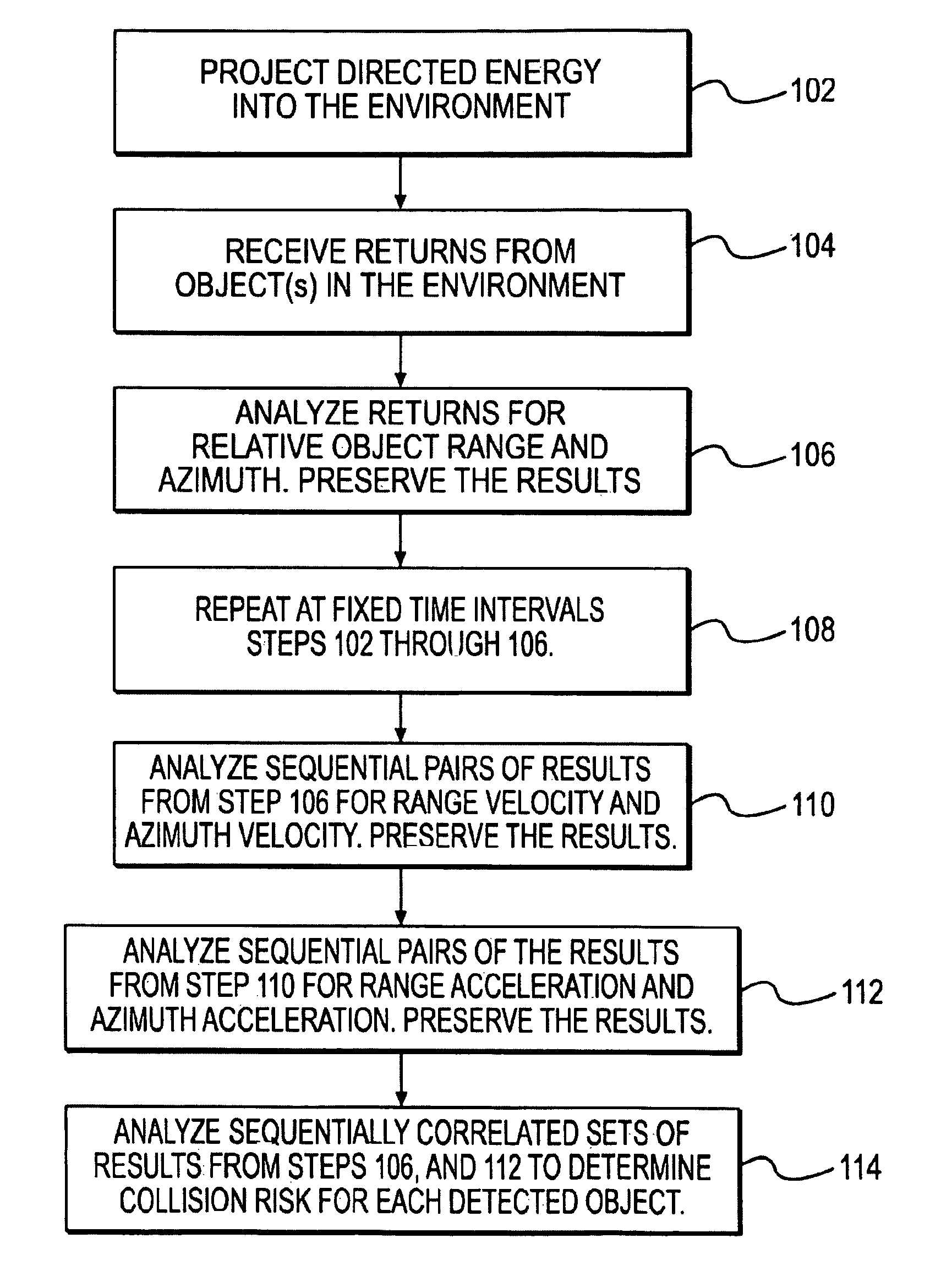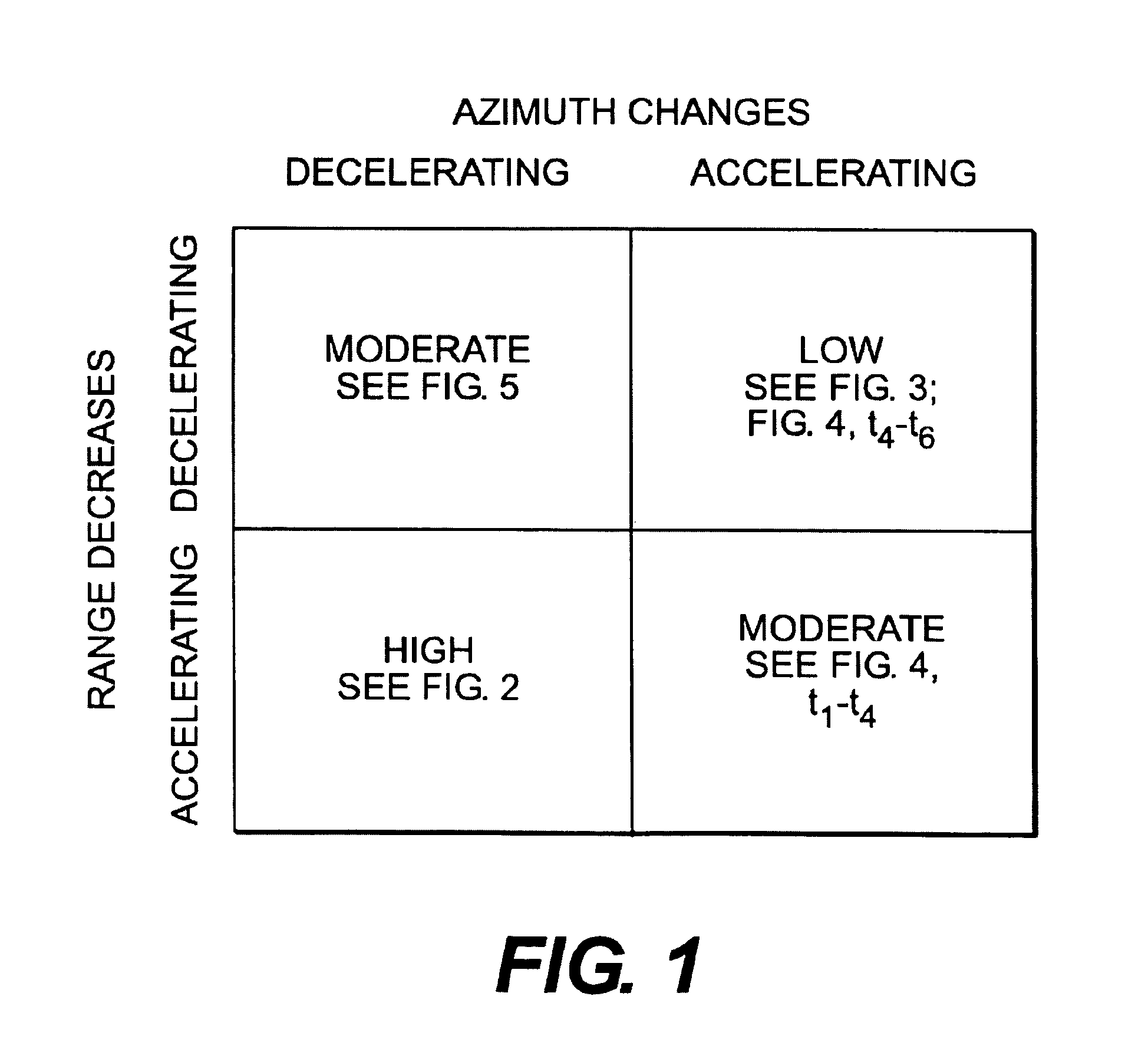Method for determining collision risk for collision avoidance systems
a collision avoidance and collision risk technology, applied in vehicular safety arrangments, process and machine control, electric devices, etc., can solve the problems of high collision risk and decelerating azimuth changes, and achieve the highest collision risk, low collision risk, and high collision risk
- Summary
- Abstract
- Description
- Claims
- Application Information
AI Technical Summary
Benefits of technology
Problems solved by technology
Method used
Image
Examples
Embodiment Construction
[0014]The present embodiments herein are not intended to be exhaustive or to limit in any way the scope of the subject matter; rather they are used as examples for the clarification of the subject matter and for enabling others skilled in the art to utilize its teaching. The word “exemplary” is used herein to mean “serving as an example, instance, or illustration.” Any embodiment described herein as “exemplary” is not necessarily to be construed as preferred or advantageous over other embodiments.
[0015]Because neither range information nor azimuth information alone are adequate to assess collision risk between a moving vehicle and an obstacle, the method of this invention uses the first and second derivatives of the relative range of a detected object with respect to time (relative velocity and acceleration respectively) in combination with change in object azimuth as sensed by the host platform to determine the risk that the object and host will collide. This method involves a shor...
PUM
 Login to View More
Login to View More Abstract
Description
Claims
Application Information
 Login to View More
Login to View More - R&D
- Intellectual Property
- Life Sciences
- Materials
- Tech Scout
- Unparalleled Data Quality
- Higher Quality Content
- 60% Fewer Hallucinations
Browse by: Latest US Patents, China's latest patents, Technical Efficacy Thesaurus, Application Domain, Technology Topic, Popular Technical Reports.
© 2025 PatSnap. All rights reserved.Legal|Privacy policy|Modern Slavery Act Transparency Statement|Sitemap|About US| Contact US: help@patsnap.com



